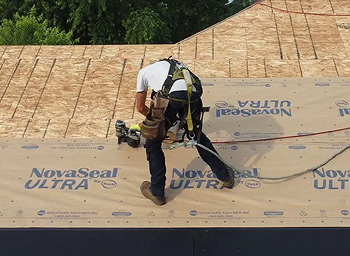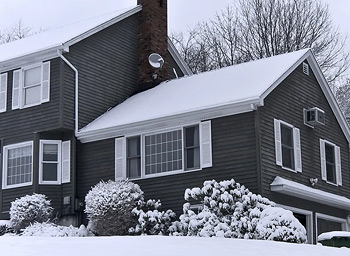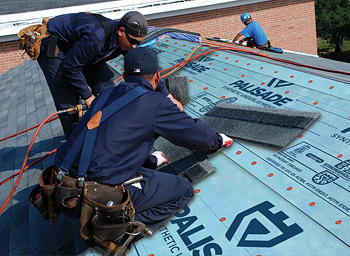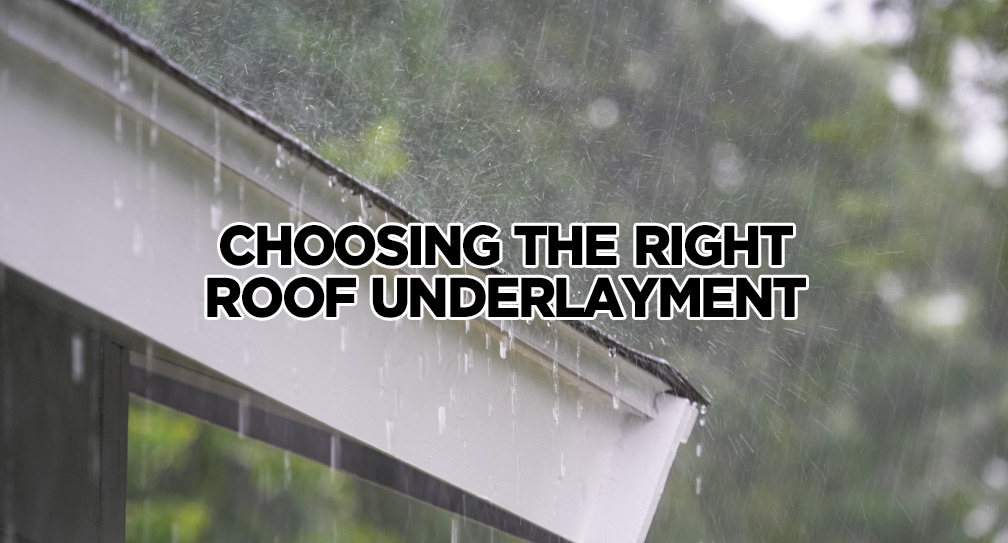The roof is the unsung hero of your home, standing strong against the elements, keeping you warm, and protecting your family and belongings. While its visible surface may get all the attention, the real work starts underneath with quality underlayment.
Choosing the right one can make all the difference in your roof’s performance and durability. That’s why knowing how to choose the right roof underlayment for your home is so important. At IPG, we specialize in synthetic roofing underlayments that offer superior protection, durability, and ease of installation.
In this blog post, we’ll explore factors like climate, roof type, and budget to help you make the best choice for your home. Let’s get started with this guide to roof underlayment selection.
What Is Roof Underlayment?

Roof underlayment is a critical component of your roofing system, serving as a protective barrier between the roof deck and the outer roofing material. It helps shield your home from water infiltration, wind-driven rain, and other environmental factors. Without proper underlayment, moisture can seep into the roof structure, causing damage that may lead to costly repairs.
There are two main types of underlayment: traditional felt and modern synthetic options. While felt was once the standard, synthetic underlayments, like those offered by IPG, have become the preferred choice due to their superior performance. Synthetic materials are lightweight, tear-resistant, and offer enhanced durability, making them ideal for extended dry-in periods and long-term protection.
In addition to their practical benefits, synthetic underlayments are easier to install, reducing labor time and costs. All in all, choosing the right roof underlayment ensures your roof can handle the demands of your climate while providing reliable, long-lasting protection for your home.
Factors to Consider When Choosing Roof Underlayment

Now, selecting the right roof underlayment requires more than just picking a product off the shelf. To make the best decision, you need to consider factors like climate, roof type, local building codes, and your budget. Here’s how each of these factors plays a role in your choice.
Climate
Firstly, your local weather is one of the most critical factors when choosing roof underlayment. For example, if you live in an area with heavy rainfall or snow, waterproof underlayments are essential to protect your home from leaks and moisture damage. In hot and sunny climates, UV-resistant options are a must to prevent premature wear and degradation.
Synthetic underlayments, like IPG’s, are designed to withstand a wide range of weather conditions, offering durability and reliable performance no matter where you live.

Roof Type
Different home roofing materials work best with specific types of underlayment. For example, asphalt shingles pair well with most synthetic options, while metal roofs may require underlayments with higher heat resistance.
Tile roofs, which are heavier, often need an underlayment that provides added durability. IPG offers versatile synthetic underlayments that are compatible with various roof types, ensuring that you can find the perfect fit for your home.
Building Codes and Regulations
Local building codes often dictate the type of underlayment required for your area, especially in regions prone to extreme weather like hurricanes or heavy snow.
Choosing a product that meets or exceeds these codes is not just a legal requirement, it’s also a smart way to ensure your roof is up to the task. IPG’s products are engineered to comply with industry standards, giving you confidence that your roof is built to last.
Budget
Your budget is another key consideration when selecting roof underlayment. While traditional felt may be less expensive upfront, synthetic options offer better long-term value. They are more durable, easier to install, and provide superior protection, which can save you money on repairs and replacements down the line.
IPG’s synthetic underlayments are cost-effective solutions that combine affordability with high performance, helping you stay within budget without sacrificing quality.
Installation Process
Another point to make it that choosing a roof underlayment that is easy to install can make a big difference in both time and cost. Lightweight and user-friendly materials are easier for contractors to work with, speeding up the process and ensuring accurate placement.
Underlayments designed for quick application reduce the risk of errors that could compromise the roof’s effectiveness. For homeowners, this translates to faster project completion and lower labor costs. Many modern synthetic underlayments are designed with efficiency in mind, making them an ideal choice for professionals and DIY enthusiasts alike.

Durability and Longevity
Durability is a must when it comes to roof underlayment. As the first line of defense against the elements, it needs to hold up against heavy rain, high winds, and intense UV exposure. Tear-resistant materials are especially important during dry-in periods when the roof is exposed but not fully finished.
Synthetic underlayments offer superior longevity compared to traditional felt, as they resist moisture, won’t degrade as quickly, and provide stronger protection over time. Opting for a durable product reduces the risk of leaks and structural damage, saving money on repairs and increasing the lifespan of your roof.
Compatibility With Other Building Materials
Lastly, your roof underlayment must work seamlessly with other materials like house wraps and flashing to create an effective barrier against air and moisture. This compatibility is essential for building a cohesive and efficient envelope that protects the home.
Products designed to integrate well with others ensure that there are no weak spots where air or water can penetrate. Some brands, like IPG, offer systems that include underlayments, house wraps, and flashing, all engineered to work together. This integrated approach enhances the home’s overall performance, improving energy efficiency and long-term durability.
How to Choose the Right Roof Underlayment for Your Home
The bottom line of this underlayment installation guide is that choosing the right roof underlayment is essential for protecting your home from the elements and ensuring long-term performance. By considering factors like climate, durability, and compatibility, you can make an informed decision. If you’re ready to learn more about how to choose the right roof underlayment for your home, we’re here to help. Our expert team can guide you through your options and provide a solution tailored to your needs.


